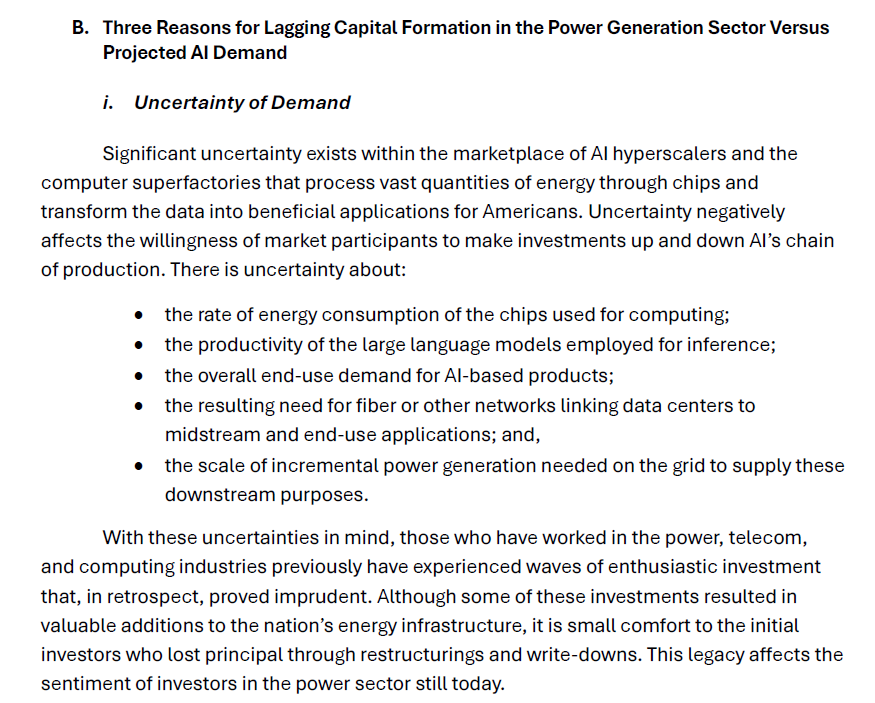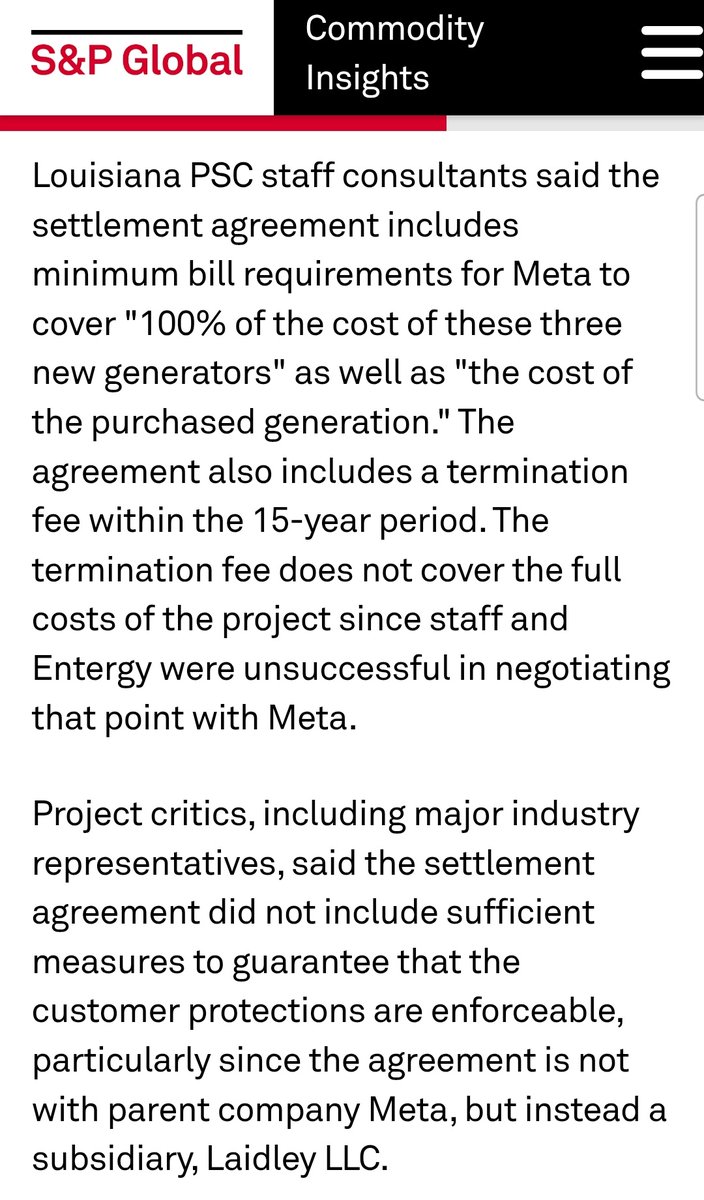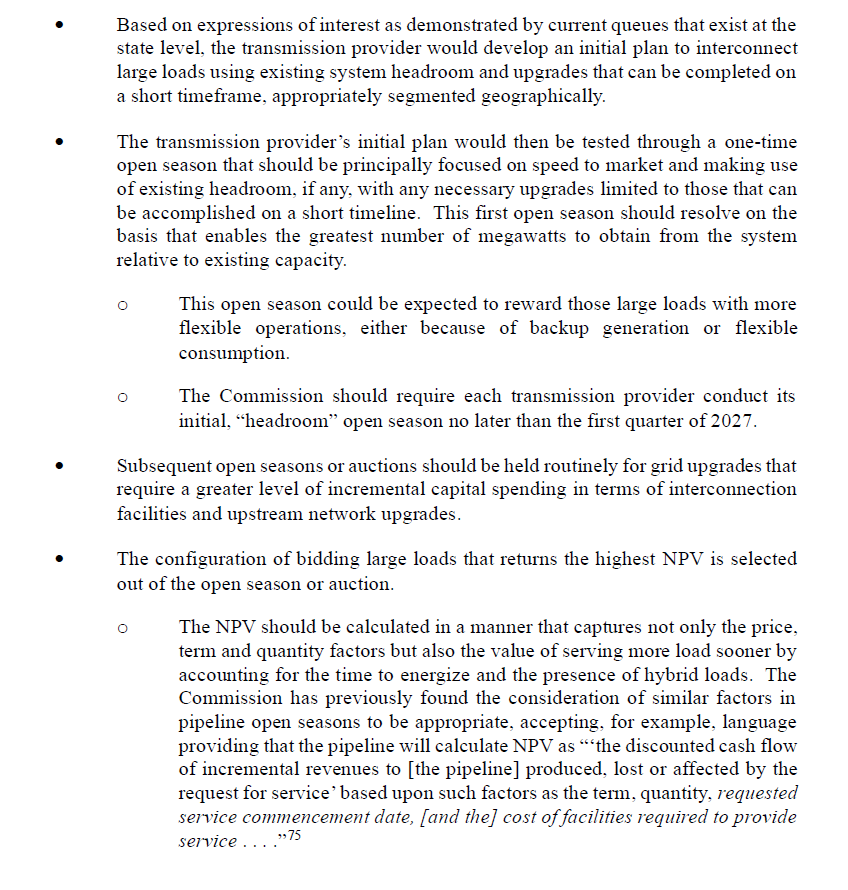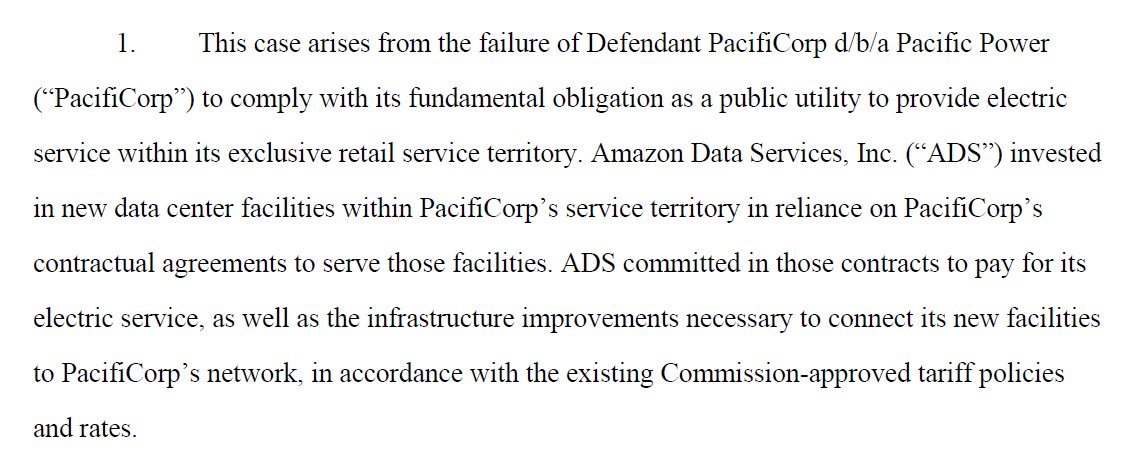
VP, Regulation @NRGenergy. Lecturer @uchicago. Past: @RSI, @mt_psc Commish & @NARUC President. Husband & father. Feed = my personal take.
How to get URL link on X (Twitter) App


 2) A supply chain where each link costs a fortune in fixed costs is more likely to have everyone hold their wallets close...
2) A supply chain where each link costs a fortune in fixed costs is more likely to have everyone hold their wallets close... 


 I really have no strong opinion on what the hyperscaler is doing here, but I do wonder why a utility commission would allow itself to be razzle-dazzled into allowing a utility fight out of legacy customers' pocketbooks to supply this load.
I really have no strong opinion on what the hyperscaler is doing here, but I do wonder why a utility commission would allow itself to be razzle-dazzled into allowing a utility fight out of legacy customers' pocketbooks to supply this load.


 Reading between the lines -- the most detailed parts of this complaint are redacted -- it looks like the utility is blockading the data centers until the latter pay a gross-up for taxes: a *32.6%* adder to all payments made to the utility to offset infrastructure costs
Reading between the lines -- the most detailed parts of this complaint are redacted -- it looks like the utility is blockading the data centers until the latter pay a gross-up for taxes: a *32.6%* adder to all payments made to the utility to offset infrastructure costs




 The Regional Greenhouse Gas Initiative is the northeast's cap-and-trade market for carbon. It's limited to the power sector and it is, important for this analysis, limited to only some of the states within power markets that have opted in.
The Regional Greenhouse Gas Initiative is the northeast's cap-and-trade market for carbon. It's limited to the power sector and it is, important for this analysis, limited to only some of the states within power markets that have opted in.

 I have no idea why any utility regulator would let monopoly utilities gamble on AI-based load growth. Letting them fight out of ratepayers’ pocketbooks for power-generation investments is utterly dumb. A competitive market exists for that. Full stop.
I have no idea why any utility regulator would let monopoly utilities gamble on AI-based load growth. Letting them fight out of ratepayers’ pocketbooks for power-generation investments is utterly dumb. A competitive market exists for that. Full stop.





 1. You make up new "benefits" -- apparently including corporate renewable goals? -- to fit into cost-benefit analysis, weighting it toward an inevitable conclusion that b>c
1. You make up new "benefits" -- apparently including corporate renewable goals? -- to fit into cost-benefit analysis, weighting it toward an inevitable conclusion that b>c

https://twitter.com/TKavulla/status/1616649276758671360

 2. This step accomplishes a few things, all of them good:
2. This step accomplishes a few things, all of them good:





 The proposal contemplates the creation of highly dynamic retail prices that encompass both the short-run marginal costs of power production (fuel, emissions) and the long-run marginal costs of capacity (new substations, capacity, etc.)
The proposal contemplates the creation of highly dynamic retail prices that encompass both the short-run marginal costs of power production (fuel, emissions) and the long-run marginal costs of capacity (new substations, capacity, etc.)

 There’s ~30 MWs of wind and solar on the ERCOT system. Much of it was on “outage” due to weather, but even if those power plants had been operationally available, they would not have been producing energy due to lack of wind and sun.
There’s ~30 MWs of wind and solar on the ERCOT system. Much of it was on “outage” due to weather, but even if those power plants had been operationally available, they would not have been producing energy due to lack of wind and sun.